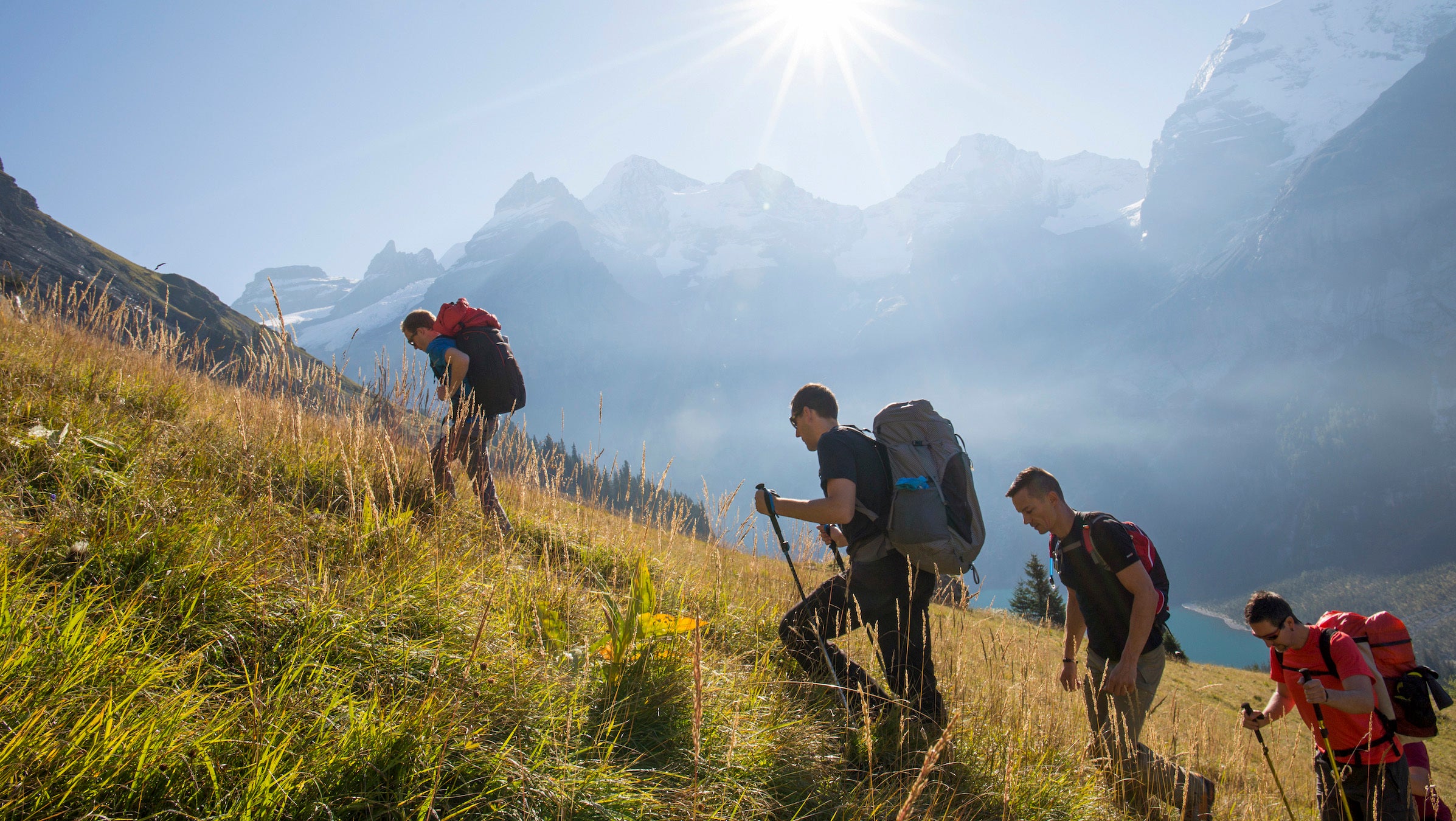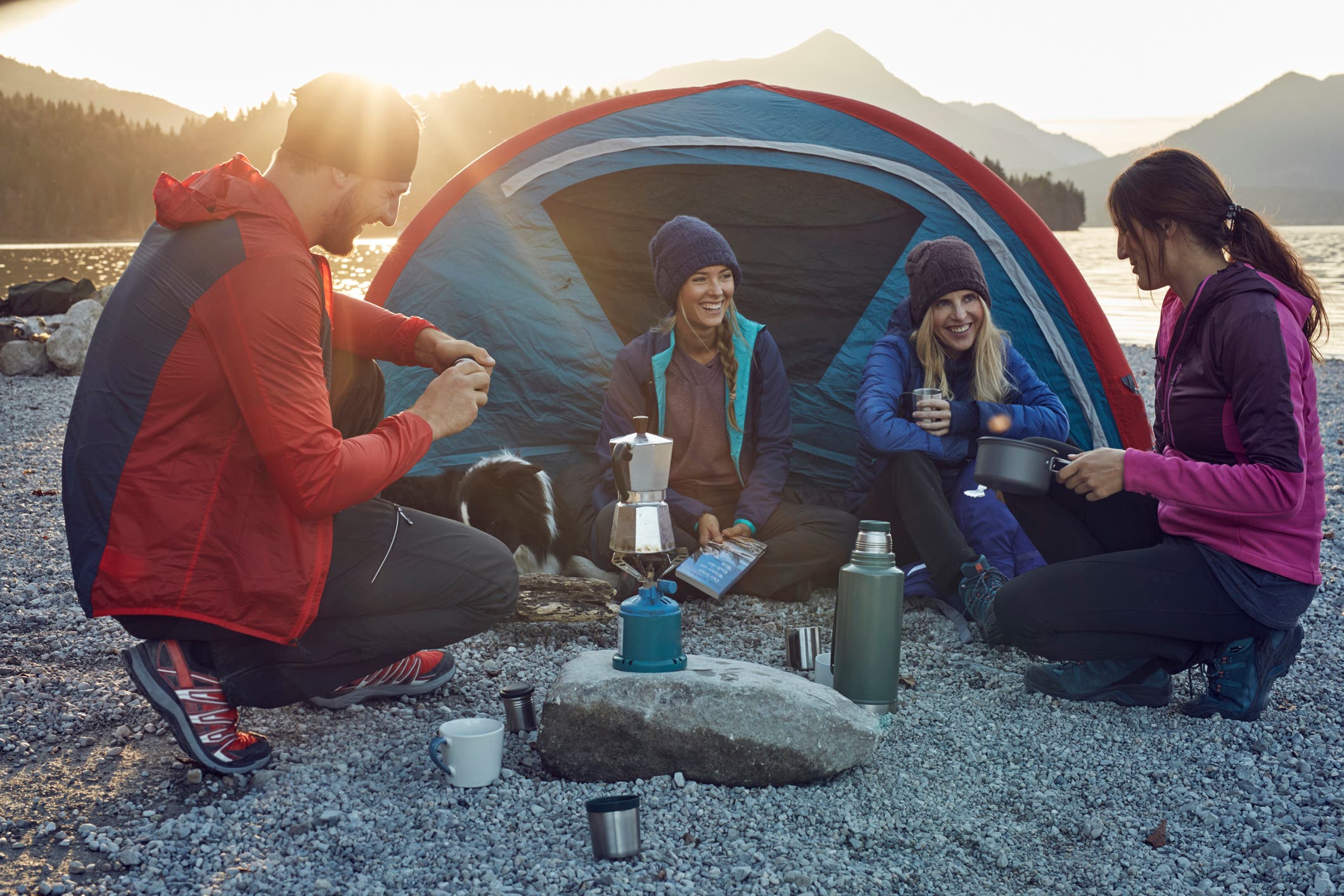8 Tips for Leading a Group Hiking Trip

(Photo: Ascent Xmedia/Stone via Getty Images)
Introducing your non-hiker friends to the backcountry can be one of the greatest joys of spending time outside. But even if you’re an expert at hanging a bear bag and scaling peaks, leading a successful group hiking trip requires some soft skills—or interpersonal skills—too. Now that you’ve convinced a group of newbies to come camping with you, your first priority is to make sure everyone—including you—has a good time. Josh Cole, Washington program director for Outward Bound’s Northwest School, has made a career of taking first-timers into the backcountry. Here are his best tips for ensuring a safe and fun group hiking trip.
1. Pick the right objective.
Save the epic climb for another time. If you push new hikers too hard, they’ll mutiny on you. Instead, plan for everyone to learn something and have fun. It sounds like Little League baseball, but it works. Choose a route with a strong reward-to-effort ratio: Good views, swimming holes, and easy miles rarely disappoint. The group’s pace might not be as fast as you’re used to, but that just means you’ll have more time to look around and enjoy the scenery. Be flexible with your expectations and have some backup plans in mind in case you need to change your route to suit the group’s ability level.
2. Don’t neglect preparation.
Before you head out, gather your friends and discuss the plan so that every is on the same page and knows what to expect. It’s a good idea to inspect everyone’s gear once it’s packed: You don’t want to find out on night one that your buddy didn’t bring a warm enough sleeping bag, or end up hauling extra gear because someone loaded up with 50 pounds of stuff they could have left at home. Always pack extra layers in your own pack—someone is bound to get cold eventually.
3. Size it right.
Aim for five or fewer people. Otherwise, it’s hard to keep tabs on each individual’s morale. It can be useful to include another experienced hiker, too, so you’re not the only one responsible for navigating, treating blisters, and carrying group gear.
4. Equality is key.
Some campers will be better mules, while others will be better cooks. Divide group gear and chores based on aptitude, not based on numeric equality. If you have time, give everyone a chance to try out different responsibilities.

5. Establish your leadership.
Don’t just bark orders; explaining why you’re doing something gets others involved in decision making. Plus, it helps them gain essential skills that will enrich their time in the outdoors and eventually help them develop into great hiking partners.
6. Check in often.
Ask your little ducklings: Are you having fun? What are you struggling with? Adjust loads and responsibilities accordingly. Pull individuals aside to chat if they go silent on you. When in doubt, a well-timed snack break can work wonders for lifting everyone’s spirits.
7. Let them fail… sometimes.
In low-stakes situations (like pitching tents in fair weather), let newbies make mistakes. Trial and error is a great teacher.
8. Don’t let them fail… sometimes.
Tiny skills clinics (e.g. hygiene, late-night bathroom breaks, etc.) will help others feel comfortable. Pooping in the woods is intimidating for a lot of first-timers, but they may be embarrassed to ask. Sprinkle some instructional talks into the agenda—these also make for great opportunities for everyone to catch their breath while hiking.